The Most Important Election of Your Life Is Not This Year
The real nightmare is likely to emerge in 2020 or thereafter, if and when a far more capable politician than Donald Trump embraces retrograde positions and rides an angry, wounded America into Washington.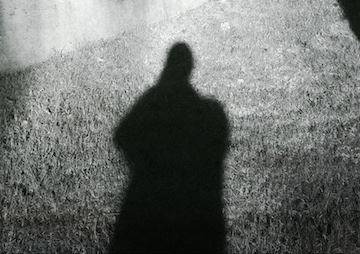 Nick Kenrick / CC-BY-2.0
1
2
3
Nick Kenrick / CC-BY-2.0
1
2
3
The voters vowed to take their revenge at the polls. They’d missed out on the country’s vaunted prosperity. They were disgusted with the liberal direction of the previous administration. They were anti-abortion and pro-religion. They were suspicious of immigrants, haughty intellectuals, and intrusive international institutions. And they very much wanted to make their nation great again.
They’d lost a lot of elections. But this time, they won.
In Poland, that is.
In two elections last year, the conservative Law and Justice Party (PiS) won the Polish presidency and then, by a more convincing margin, a parliamentary majority.
And this wasn’t just a victory for PiS. It was a victory for Poland B.
Since its post-Communist transition, that country is often described as having cleaved into two parts, commonly known as “Poland A” and “Poland B.” Poland A links together an archipelago of cities and their younger, wealthier inhabitants. Poland B encompasses the poorer, older parts of the population, many clustered in the countryside, particularly in the country’s eastern reaches near the former Soviet border.
After 1989 and the implementation of a punishing series of economic reforms, Poland A took off economically. By 2010, Warsaw, the capital, had become one of the most expensive places to live in Europe, outranking even Brussels and Berlin. New entrepreneurs and corporate managers took advantage of a host of economic opportunities, particularly after Poland joined the European Union (EU) in 2004.
In the countryside, on the other hand, Poland B fell ever further behind. Factories closed, and many farms couldn’t keep going. Jobs disappeared. Several million Poles decamped abroad in search of better economic opportunities. In other words, as the good times rolled in Poland A, Poland B languished.
Until the elections of 2015, Poland’s liberals dominated political, economic, and cultural life. Although they may not exactly be “liberal” in the American sense of supporting government entitlement programs, they are generally less religious, more tolerant of differences, and more open to the world than their conservative counterparts. They have squared off against the denizens of Poland B over such issues as the role of the Catholic Church in public life, the number of immigrants the country should allow in, and how close Poland should be to the EU.
You can find the equivalent of Poland A and Poland B elsewhere in Eastern Europe, too. The capitals of the region — Prague, Bratislava, Budapest — enjoy per capita GDPs well above the European average, while rural areas suffer. The B populations, however, have not taken their increasingly second-class citizenship quietly. Throughout the region they’ve risen up to vote for populist, often rabid, right-wing parties like FIDESZ and Jobbik in Hungary and GERB and Ataka in Bulgaria that voice their disappointment and swear they’ll make their countries great again. These parties are consistently anti-liberal in the European sense, opposing both an unregulated market and tolerant open societies.
Even in the Western European heartlands, you can see a Europe B coalescing around nationalist, anti-immigrant parties like the National Front in France, the UK Independence Party in Great Britain, the Swedish Democratic Party, and the Freedom Party of Austria (whose leader just lost the country’s presidency by 0.6% of the vote). While Europe A tries to keep the EU show going, Europe B is already heading for the exits. (Think: Brexit in England.)
No doubt it’s occurred to you by now that the United States is not immune to this trend. With the rise of an aggressive version of right-wing American populism, the United States is waking up to a dividing line that is becoming sharper by the day. Donald Trump has made headlines with his talk of building a wall between the United States and Mexico, but his campaign has highlighted a more important division: between America A and America B.
Responding to the irresistible pull of celebrity culture and to the exclusion of almost anything else, the U.S. media has focused on the person of Donald Trump. Far more important, however, are the people who support him.
America B
In the speech that made him famous, the keynote address at the 2004 Democratic National Convention, Barack Obama challenged the way “the pundits like to slice and dice our country” — into black America and white America, liberal America and conservative America, and most famously into red states and blue states as defined by party affiliation. We live, however, in a purple America, Obama suggested, “all of us pledging allegiance to the stars and stripes, all of us defending the United States of America.”
That rousing speech put Obama on the map. But that map would have its revenge. Once he reached the Oval Office four years later, the representatives of the Republican red states would ceaselessly battle the president’s every initiative from health care to the Iran nuclear deal. As a result, during his tenure, the U.S. became more, not less, politically divided.
In some sense, though, the Obama of 2004 was right. The key dividing line in the U.S. had little to do with Republican vs. Democrat, rich vs. poor, or liberal vs. conservative. To explode these conventional oppositions, it would take a billionaire Republican populist, who had once been a solid Democrat and who offered a political program that mixed together liberal and conservative ideas, conspiracy theories and racial animus, but above all else exhortations to America B to rise up and retake the country. Indeed, the triumph of Trump in the Republican primaries — based, in part, on his appeal to former white working class Democrats and independents, his fierce attacks on mainstream Republicans, and his flouting of what passes for conventional wisdom about electability — sent the pundits back to their think tanks to figure out what on earth was happening with American voters.
Trump was, they concluded, sui generis, a peculiar mutation of the American political system generated by the unholy coupling of reality television and the Tea Party revolt. But Trump is not, in fact, a sport of nature. He reflects trends taking place around the world. He is, in many ways, just a mouthpiece for America B.
Dig, Root, GrowThis year, we’re all on shaky ground, and the need for independent journalism has never been greater. A new administration is openly attacking free press — and the stakes couldn’t be higher.
Your support is more than a donation. It helps us dig deeper into hidden truths, root out corruption and misinformation, and grow an informed, resilient community.
Independent journalism like Truthdig doesn't just report the news — it helps cultivate a better future.
Your tax-deductible gift powers fearless reporting and uncompromising analysis. Together, we can protect democracy and expose the stories that must be told.
This spring, stand with our journalists.
Dig. Root. Grow. Cultivate a better future.
Donate today.


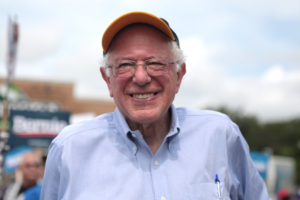

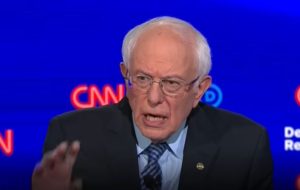
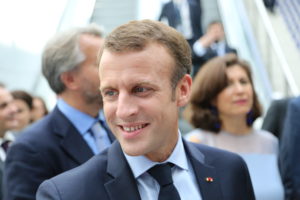
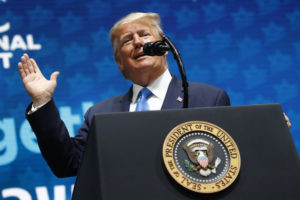
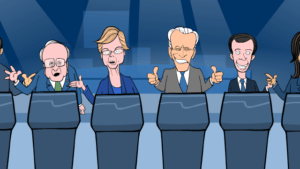

You need to be a supporter to comment.
There are currently no responses to this article.
Be the first to respond.